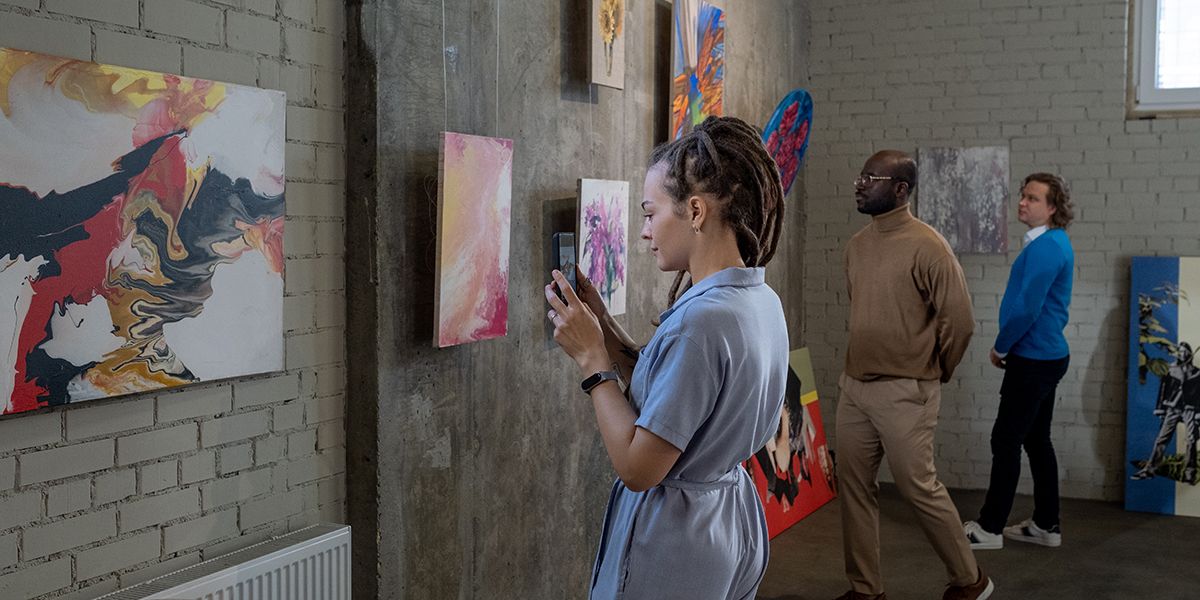Art naming, a seemingly simple yet profoundly impactful aspect of the artistic process, has evolved significantly throughout history. From ancient civilizations to the digital age, the names given to artworks have carried cultural, emotional, and sometimes controversial weight. Let’s embark on a journey through time to uncover the fascinating historical perspectives on art naming.
The Ancient Art Naming Tradition
In the dawn of human creativity, our ancestors expressed themselves through art. The naming of these early artworks was not merely a formality; it held symbolic importance. Ancient civilizations often named their creations based on cultural, religious, or mythological references. The names weren’t just labels; they were keys to unlocking deeper meanings.
The Renaissance Era: A Shift in Naming Trends
Fast forward to the Renaissance, a period marked by a resurgence of interest in art and culture. Here, we witness a shift in naming trends. Artists, now seen as individual creators, took a more personal approach to naming their masterpieces. The names became descriptors, providing insight into the content and emotion behind the work.

19th Century Romanticism and Art Naming
The Romantic era brought forth a wave of emotional expression in art. During this period, artists adopted narrative titles, turning their creations into stories. Each painting became a chapter in a larger tale, inviting viewers to connect on a profound, emotional level.
Modern Art: Breaking the Naming Mold
As we progress into the 20th century, modern art challenged traditional naming conventions. Abstract art, in particular, presented a unique challenge — how to name the unnameable. Artists grappled with finding words to encapsulate the essence of non-representational works, giving rise to avant-garde naming practices.
Cultural Influences on Art Naming
Cultural diversity plays a pivotal role in shaping art names. Different societies bring distinct perspectives to naming conventions. Cross-cultural collaborations often result in a fusion of naming styles, creating a rich tapestry of linguistic influences in the art world.
The Psychology of Art Names
Delving into the psychology of art names reveals a fascinating interplay between language and perception. The names artists choose can significantly impact how viewers interpret and connect with their work. A well-chosen name can guide emotions and thoughts, enhancing the overall artistic experience.
Controversial Art Names Throughout History
Art history is dotted with instances of controversial or provocative names. These names spark discussions, challenge norms, and sometimes lead to censorship. Examining these instances provides insight into the power dynamics at play in the art world and society at large.
Art Movements and Naming Patterns
Within various art movements, distinct naming patterns emerge. Surrealism embraces dreamlike, often poetic titles, while Cubism takes a more analytical and fragmented approach. Understanding these naming patterns adds depth to our appreciation of different artistic movements.

The Digital Age: Evolution of Art Naming
The advent of the internet and social media has ushered in a new era of art naming. Artists now navigate the challenge of standing out in a vast digital landscape while considering SEO implications. The online environment has reshaped how names are chosen and how artworks are discovered and shared.
Challenges in Naming Contemporary Art
In the contemporary art scene, artists face unique challenges in naming their works. Striking a balance between creativity and SEO optimization is a delicate art. This section explores the complexities artists encounter in the digital age and offers insights into effective naming strategies.
Strategies for Effective Art Naming
For artists navigating the labyrinth of art naming, certain strategies can enhance the impact of their chosen titles. This section provides practical tips on balancing creativity with relevance, ensuring that the chosen name resonates with the intended audience while maximizing discoverability.
The Influence of Critics and Curators on Art Naming
Critics and curators wield considerable influence in the art world, including the naming process. This section examines how external voices shape the narrative around artworks and explores the power d
Future Trends in Art Naming
As we look ahead, the evolution of art naming continues. Technological advancements, changing cultural landscapes, and shifting artistic paradigms all contribute to the unfolding narrative of art names. Speculating on future trends offers a glimpse into the dynamic and ever-evolving world of art naming.
The Impact of Social Media
In the age of digital connectivity, social media has become an integral part of our daily lives, shaping how we communicate, share information, and perceive the world around us. From its humble beginnings to the present-day landscape, the impact of social media has been profound, influencing both individuals and societies at large.
Social media refers to online platforms and applications that facilitate the creation and sharing of content, as well as the exchange of ideas and information among users. Examples include Facebook, Instagram, Twitter, and LinkedIn.

Ubiquity of Social Media
With billions of active users globally, social media has achieved unprecedented ubiquity, transcending geographical boundaries and connecting people from diverse backgrounds.
Historical Evolution
Early Platforms
The roots of social media can be traced back to the early 2000s with platforms like Friendster and MySpace, which laid the groundwork for the interactive and user-centric nature of modern social media.
Growth and Diversification
Over the years, social media has evolved, diversifying into various platforms catering to different interests and communication styles. This evolution has been fueled by technological advancements and changing user preferences.
Positive Impacts
Connectivity and Networking
Social media has revolutionized how we connect with others, breaking down barriers and enabling real-time communication across the globe. It has facilitated the rekindling of old friendships and the formation of new ones.
Business Opportunities
For businesses, social media has become a powerful tool for marketing and customer engagement. It provides a platform to showcase products, gather customer feedback, and build brand loyalty.
Social Activism
Social media has played a pivotal role in social activism, amplifying voices and mobilizing communities for various causes. Movements like #MeToo and Black Lives Matter gained momentum through widespread social media support.
Conclusion
In concluding our exploration of historical perspectives on art naming, it’s evident that this seemingly subtle aspect of art creation holds profound significance. From the symbolic traditions of ancient civilizations to the challenges of naming abstract works in the digital age, the journey of art naming reflects the evolution of human expression and societal dynamics.
As we continue to witness the interplay between tradition and innovation in the art world, one thing remains certain — art naming is a living, breathing entity, adapting to the times while preserving the essence of creative expression.ynamics inherent in naming decisions within the realms of galleries, museums, and exhibitions.

